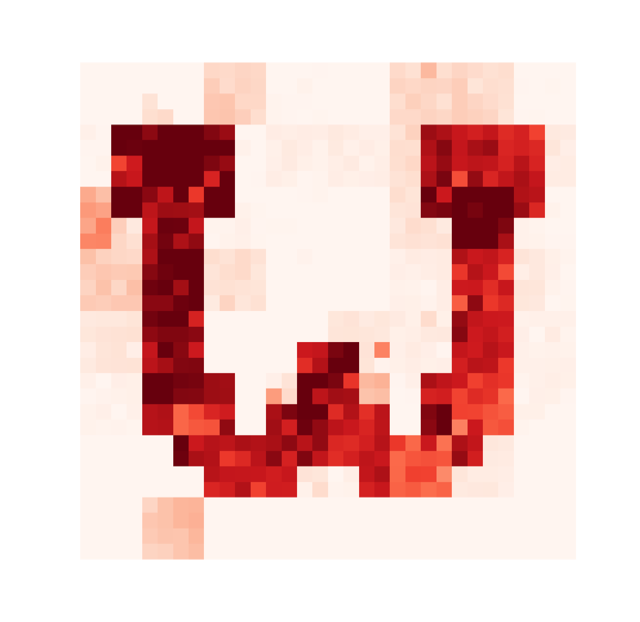Babara Jacak, Colloquium Speaker
News Archives
Mapping the universe with new radio telescopes
Talk by Prof Peter Timbie at the Physical Sciences Laboratory (3725 Schneider Dr., Stoughton, Wi) entitled “Mapping the Universe with New Radio Telescopes”.
What is the nature of the inflation process that started the Big Bang expansion of the Universe? What is the Dark Energy that is causing that expansion to accelerate? And what is the origin of the recently discovered `fast radio bursts’ that flash on the sky 10,000 times per day? Professor Timbie will describe plans to build radio telescopes, with help of PSL, that will be optimized to solve these three mysteries.
Test image recorded with a prototype camera for the Cherenkov Telescope Array

Each colored square corresponds to a pixel in the camera. The camera has 1024 pixels, each sensitive to single photons with time resolution of one billionth of a second. The full camera weighs several hundred pounds and measures five feet across. The image was created in the laboratory in Chamberlin Hall by flashing a light emitting diode at the camera, with pixels surrounding the W electrically suppressed by operating them at low bias voltage. The color scale indicates how many photons were detected in each pixel, with the darkest red pixels corresponding to the most light. The actual photons that were detected are blue. The pixels have not yet been calibrated, which is why some artifacts are visible. The camera will be installed on a prototype telescope at the Fred Lawrence Whipple Observatory, where it will detect flashes of light produced by very high energy gamma rays produced in astrophysical sources and colliding with Earth’s atmosphere. The prototype Schwarzschild Couder Telescope for the Cherenkov Telescope Array is supported by a Major Research Instrumentation grant from the National Science Foundation, award #1229792. Image credit: Colin Adams, Thomas Meures, Justin Vandenbroucke, Physics Department.
A short video describes the project and details UW’s involvement.
Dark matter detection receives 10-ton upgrade
Ten University of Wisconsin–Madison scientists are involved in designing and testing the LZ detector, and are part of a team of more than 200 researchers from 38 institutions in five countries working on the project. This month, the Department of Energy approved proceeding with the final stages of assembly and construction of LZ at the Sanford Underground Research Facility in South Dakota, with a total project cost of $55 million.
Illustration Credit: SLAC
Garage Physics Pop-up Classes
The department mourns the loss of Professor Marj Corcoran of Rice University
Dr. Corcoran was killed in a bicycle accident on February 3, 2017. Dr. Corcoran was the 2008 recipient of UW Physics Department’s Distinguished Scientist award in recognition of her work at UW-Madison with Prof. Albert Erwin.
The department mourns the passing of Emeritus Prof. Marv Ebel
Marv passed away January 28, 2017. Prof. Ebel was the 2016 recipient of the department’s Distinguished Service Award, recognizing his years of service in the Department and as an Associate Dean in the Graduate School.
UW-Madison team wins Innovation Award in Hyperloop competition
SpaceX and Tesla Motors co-founder Elon Musk, who is the driving force behind the Hyperloop competition, took the opportunity to sit in the Badgerloop pod while touring the various team’s booths. The team purposefully built its pod to fit Musk, who is 6 feet 2 inches tall.
Coherent Magnetic Response at Optical Frequencies Using Atomic Transitions
Over the last two decades, there has been a growing interest in a new generation of optical tools using materials that are not available in nature. These materials offer the promise of devices with unique capabilities such as super-resolution lenses and optical cloaks. For these materials to work, they must interact strongly with both the magnetic and the electric field of light. However, the interaction of atoms with the magnetic field is almost always ignored since its strength is many orders of magnitude weaker than the electric field. A paper published in Physical Review X by Nicholas R. Brewer, Zachary N. Buckholtz, Zachary J. Simmons, Eli A. Mueller, and Deniz D. Yavuz shows, for the first time, a strong interaction between the magnetic field of a laser beam and an ensemble of atoms.
The group passed laser light through a special crystal doped with europium atoms, which have a very complex electronic structure. The structure is such that, for a specific wavelength of light (527.5 nm), the electrons prefer to interact with the magnetic field of light instead of the electric field. For this to happen, it is essential that (i) the crystal is cooled to a temperature of 4 K, and (ii) the color of light is very precise (the wavelength should be accurate at the level of one part in ten billion). By measuring how much light is transmitted through the crystal as the laser intensity is varied, they were able to deduce the strength of the magnetic interaction.
The results demonstrate one way to create materials with unusual optical properties. Future work could also use interactions between electrons and the magnetic field of a laser to study quantum interference.
Jim Lawler Awarded 2017 LAD Laboratory Astrophysics Prize
The Laboratory Astrophysics Division (LAD) of the American Astronomical Society (AAS) is pleased to announce that its 2017 Laboratory Astrophysics Prize, given to an individual who has made significant contributions to laboratory astrophysics over an extended period of time, goes to James E. (Jim) Lawler (University of Wisconsin, Madison) for his contributions in atomic physics to advance our understanding of galactic nucleosynthesis and chemical evolution. His spectroscopic work has opened a new era of stellar chemistry by advancing our ability to compare nucleosynthesis predictions with accurate relative elemental abundances.
Photo Credit: Jeff Miller